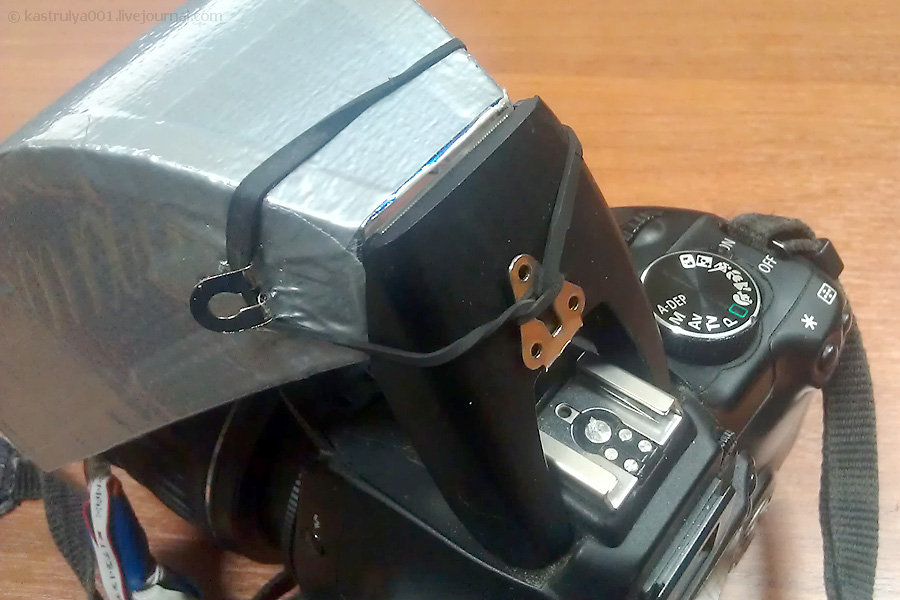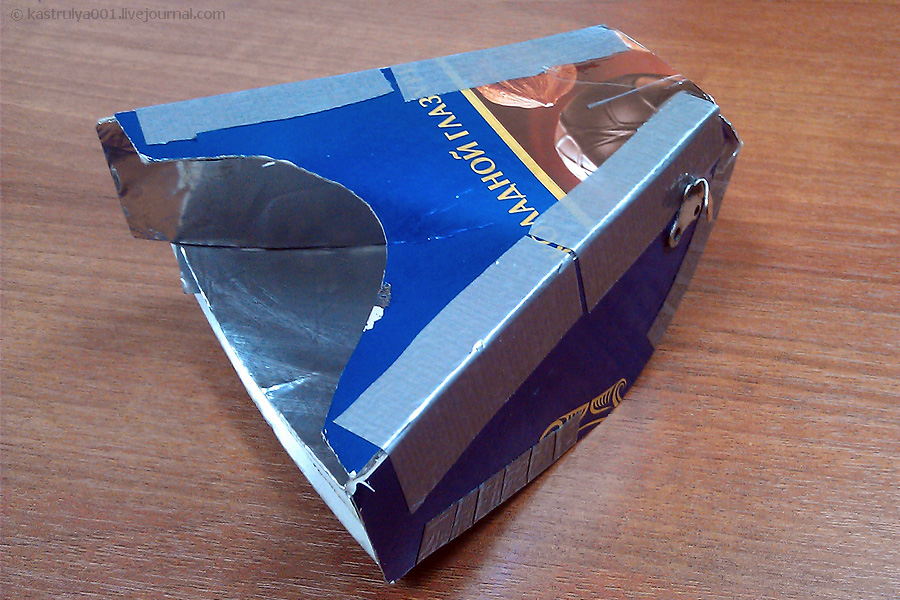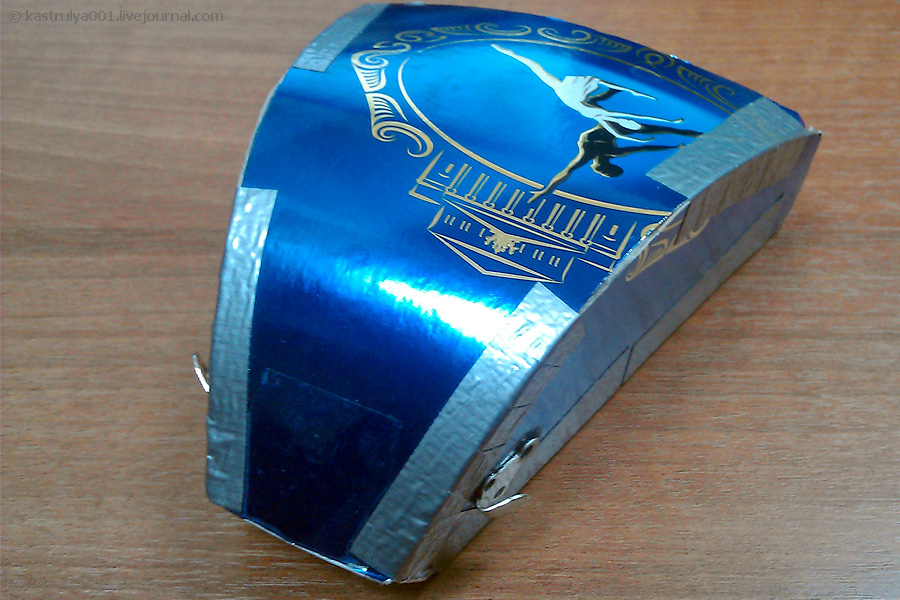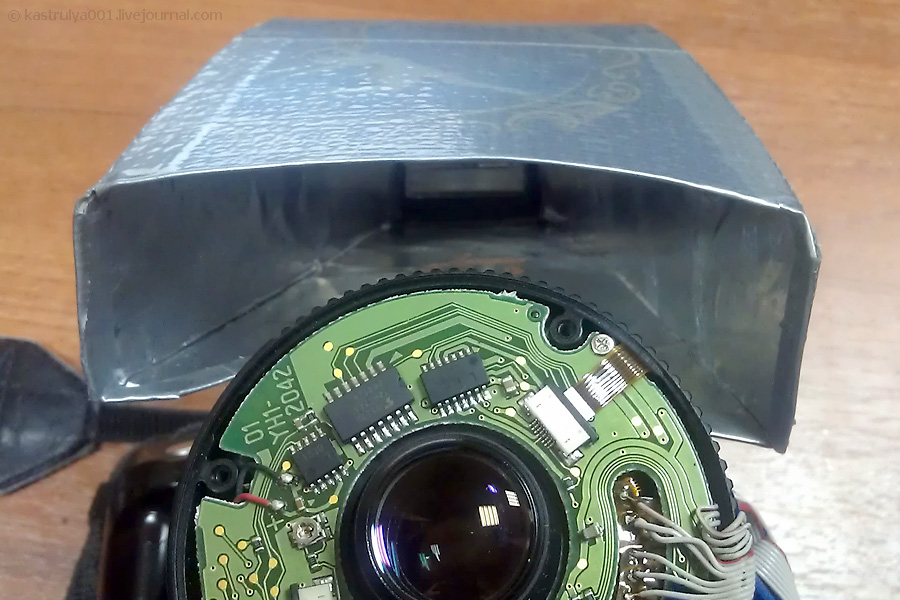We make a macro flash from the built-in flash
Recently, it has become popular to make a budget macro from an inverted whale , but reworking the lens alone does not give the desired result. For macro you need good light, and a good flash is also worth a lot, which makes this solution not so budgetary. Having removed my macro riddles with a flashlight , I quickly realized that I had to come up with something. Bunches of optics and stuff do not suit me, it’s difficult. Then I made a reflective casing on the built-in flash.

It took about half an hour, it took:
1. a sheet of thin cardboard A4
2. superglue (cyanoacrylate)
3. 3 clothes hooks
4. adhesive tape
5. foil
6. double-sided adhesive tape, can be replaced with glue
7. stationery elastic
For cameras with a design close to the Canon EOS 350D, you can try using my pattern, it is in pdf and ready to print.
The pattern must be printed on A4 and glued to cardboard or cut without a blank sticker. Also, on the pattern, it is necessary to cut out the details from the foil. I glued the foil after gluing the cardboard parts onto double-sided tape, but you can try before.

If the cardboard is too soft, glue the additional place where the hooks are attached with several more layers of cardboard. Along the edge of the structure, where cardboard is pressed against the flash, with a tape you can glue a frame of solid wire so that the edges do not fray.
At this stage, something like this should appear:


Glue the hooks and glue the entire case with tape to give structural strength and you can test:


It took about half an hour, it took:
1. a sheet of thin cardboard A4
2. superglue (cyanoacrylate)
3. 3 clothes hooks
4. adhesive tape
5. foil
6. double-sided adhesive tape, can be replaced with glue
7. stationery elastic
For cameras with a design close to the Canon EOS 350D, you can try using my pattern, it is in pdf and ready to print.
The pattern must be printed on A4 and glued to cardboard or cut without a blank sticker. Also, on the pattern, it is necessary to cut out the details from the foil. I glued the foil after gluing the cardboard parts onto double-sided tape, but you can try before.

If the cardboard is too soft, glue the additional place where the hooks are attached with several more layers of cardboard. Along the edge of the structure, where cardboard is pressed against the flash, with a tape you can glue a frame of solid wire so that the edges do not fray.
At this stage, something like this should appear:


Glue the hooks and glue the entire case with tape to give structural strength and you can test:

